An Oral Mechanism Examination (OME) is a comprehensive assessment evaluating the structural and functional integrity of oral and facial structures critical for speech and swallowing. It provides clinical insights into diagnosing and managing communication and swallowing disorders, serving as a foundational tool in audiology and speech-language pathology.
1.1 Definition and Purpose
The Oral Mechanism Examination (OME) is a detailed evaluation of the oral and facial structures’ structural and functional integrity. It assesses the lips, jaw, tongue, and palate to identify abnormalities in speech and swallowing. The purpose of an OME is to diagnose communication and swallowing disorders, guiding targeted interventions. It is essential in audiology and speech-language pathology, providing insights into the mechanisms underlying speech production and swallowing processes, aiding in personalized treatment planning for pediatric and adult patients.
1.2 Importance in Audiology and Speech-Language Pathology
The Oral Mechanism Examination (OME) is crucial in audiology and speech-language pathology for identifying structural and functional abnormalities affecting speech and swallowing. It aids in diagnosing communication disorders, guiding interventions, and monitoring progress. By evaluating oral and facial structures, OME provides insights into the mechanisms underlying speech production and swallowing, enabling professionals to develop targeted treatment plans tailored to pediatric and adult patients’ needs, enhancing clinical decision-making and patient outcomes.
Key Components of an Oral Mechanism Exam
The exam evaluates facial symmetry, lip posture, jaw mobility, tongue strength, and palate function, assessing structural and functional aspects essential for speech and swallowing.
2.1 Facial Appearance and Symmetry
The examination assesses facial symmetry, checking for signs of weakness, drooping, or asymmetry that may indicate neurological or structural abnormalities. Observations include facial balance at rest and during expression, noting any irregularities in muscle tone or movement. Palpation may be used to evaluate facial muscle strength and integrity. Any deviations from normal symmetry or appearance are documented to guide further assessment or referral, ensuring comprehensive evaluation of the oral mechanism’s supporting structures.
2.2 Lips: Appearance, Posture, and Mobility
Lip assessment involves evaluating their appearance, posture, and mobility. The examiner notes any abnormalities like thinning, thickening, or discoloration. Posture is observed as lips at rest and during function. Mobility is tested through movements such as puckering, blowing, and alternating between relaxed and tensed states. Deviations may indicate neuromuscular issues or structural anomalies, providing critical insights into the patient’s oral mechanism and overall communication abilities.
2.3 Jaw and Teeth Evaluation
Jaw and teeth evaluation involves assessing range of motion, symmetry, and occlusion. The patient is asked to open and close their mouth to observe jaw alignment and movement. Teeth alignment, wear patterns, and presence of any prosthetics or missing teeth are noted. This assessment helps identify issues like malocclusion, temporomandibular joint dysfunction, or tooth-related problems that may impact speech and swallowing, providing essential data for diagnosis and treatment planning.
2.4 Tongue Assessment: Mobility, Strength, and Coordination
Tongue assessment evaluates mobility, strength, and coordination through specific tasks like protrusion, lateral movement, and elevation. Observations include accuracy, speed, and symmetry of tongue movements. Strength is measured by resistance tasks, while coordination is assessed through repetitive and alternating motions. Findings help identify deviations linked to speech or swallowing difficulties, guiding targeted interventions to improve oral motor function and overall communication effectiveness.
2.5 Palate and Pharyngeal Function
The assessment of the palate and pharynx focuses on their structural and functional roles in speech and swallowing. Palatal movement, including elevation and symmetry, is observed during tasks like speech and gag reflex. Pharyngeal function is evaluated through swallowing mechanisms, noting coordination and efficiency. Any deviations in palatal or pharyngeal function may indicate disorders requiring further investigation, ensuring comprehensive evaluation of oral-pharyngeal contributions to communication and swallowing processes.
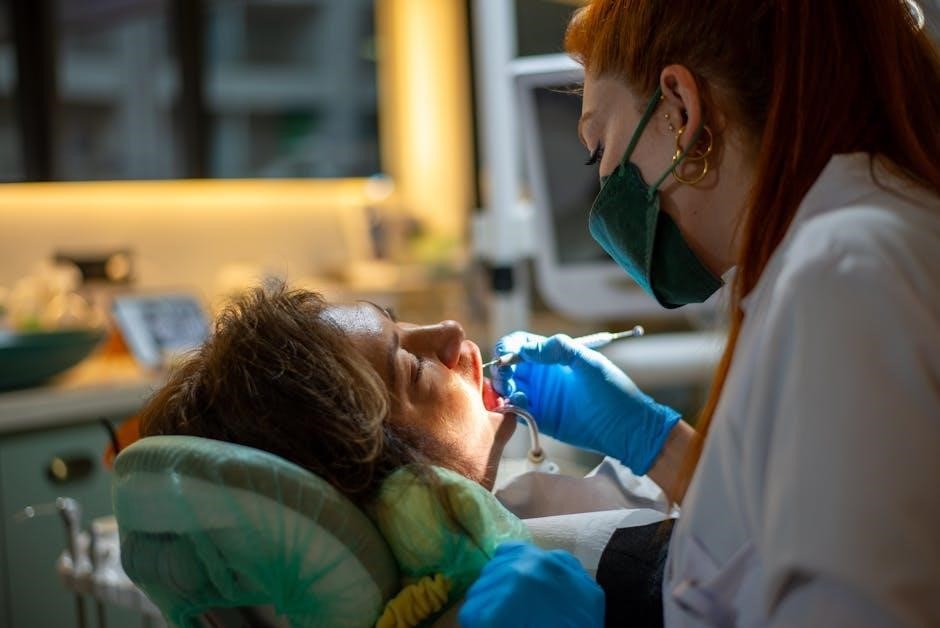
Standard Forms and Documentation
Standardized forms like the Oral Mechanism Examination Form (OMEF) and Screening Test Checklist are essential for documenting findings. These tools ensure consistency and accuracy in assessing oral structures, facilitating clinical decision-making and treatment planning.
3.1 Oral Mechanism Examination Form (OMEF)
The Oral Mechanism Examination Form (OMEF) is a structured document used to record detailed observations of facial appearance, lip posture, jaw alignment, tongue mobility, and palate function. It includes sections for noting abnormalities and provides a standardized framework for clinicians to assess and document oral-facial structures. The form is widely utilized in audiology and speech-language pathology to ensure comprehensive and accurate evaluations, aiding in diagnosis and treatment planning for patients with communication and swallowing disorders.
3.2 Screening Test Checklist for Oral Mechanism
The Screening Test Checklist for Oral Mechanism is a concise tool designed to quickly assess key oral-facial structures and functions. It includes sections for evaluating facial symmetry, lip posture, jaw alignment, tongue mobility, and palate function. The checklist helps identify potential abnormalities that may require further investigation. Clinicians use it to streamline the screening process, ensuring efficient and targeted evaluations. It is particularly useful in initial assessments or for monitoring changes over time in patients with speech or swallowing concerns.
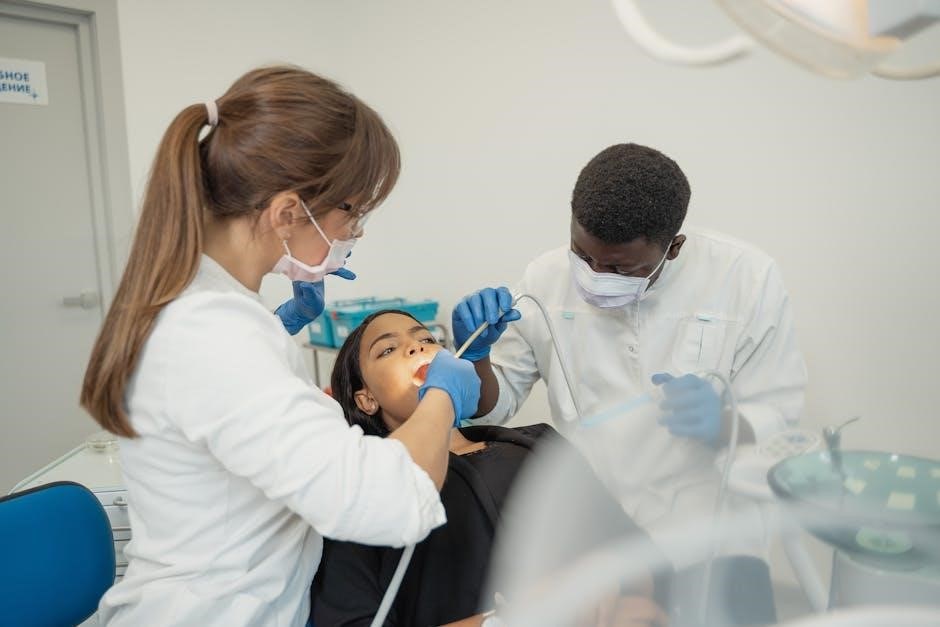
Clinical Applications of the Oral Mechanism Exam
The Oral Mechanism Exam is crucial for identifying speech and swallowing disorders, guiding pre- and post-surgical assessments, and informing treatment planning for patients with oral-facial anomalies.
4.1 Identifying Speech and Swallowing Disorders
The Oral Mechanism Exam plays a pivotal role in detecting speech and swallowing disorders by assessing structural abnormalities and functional limitations. It helps identify issues such as dysarthria, apraxia, and dysphagia, enabling early intervention and personalized treatment plans. Through detailed evaluation of facial symmetry, lip mobility, jaw alignment, tongue coordination, and palate function, clinicians can pinpoint specific impairments affecting communication and swallowing processes, ensuring targeted therapeutic strategies for optimal patient outcomes.
4.2 Pre- and Post-Surgical Assessments
The Oral Mechanism Exam is instrumental in pre- and post-surgical evaluations, particularly for surgeries like tumor resection or carotid endarterectomy. Pre-surgically, it aids in assessing baseline oral function, while post-surgically, it evaluates changes in speech, swallowing, and facial symmetry. This assessment guides surgical planning and rehabilitation, ensuring tailored interventions for recovery. Documenting pre- and post-surgical findings helps track progress and supports effective communication between multidisciplinary teams, enhancing patient care and functional outcomes.
Preparation for the Oral Mechanism Exam
Preparation involves ensuring the patient completes oral care, sanitizing hands, and wearing gloves. Building rapport is essential for patient comfort and cooperation during the assessment.
5.1 Patient Preparation and Rapport-Building
Patient preparation involves ensuring oral care is completed, hands are sanitized, and gloves are worn. Building rapport is crucial for patient comfort and cooperation. This includes clear communication, empathy, and creating a relaxed environment. Observing the patient’s facial expressions and behavior during interaction aids in assessing their anxiety levels. Establishing trust fosters active participation, ensuring accurate assessment of oral and facial structures. A calm and supportive approach minimizes anxiety, facilitating a thorough examination process.
5.2 Tools and Equipment Needed
The OME requires specific tools, including a penlight or flashlight for visualization, gloves for hygiene, and a tongue depressor for assessing tongue mobility. Optional tools like a goniometer can measure jaw range, while a mirror aids in observing oral structures. Calibration tools may be used for precise measurements. A screening checklist or OME form is essential for documenting findings. Proper equipment ensures a thorough and accurate assessment of oral and facial mechanisms during the examination process.
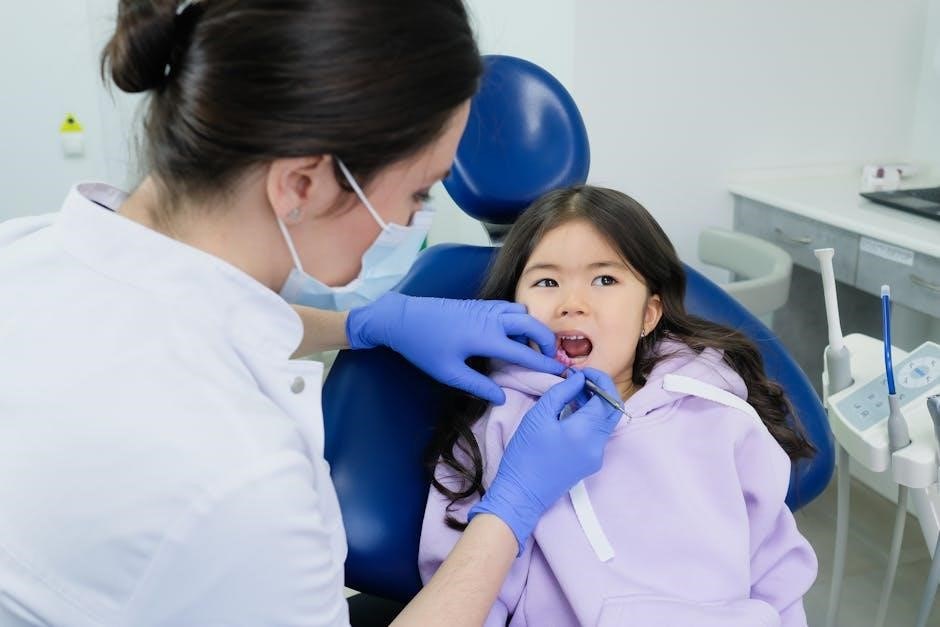
Challenges in Conducting the Exam
Challenges include patient anxiety, limited cooperation, and variability in examiner expertise, which can affect assessment accuracy and reliability, requiring skilled rapport-building and standardized protocols to ensure consistency.
6.1 Patient Cooperation and Anxiety
Patient cooperation and anxiety significantly impact the accuracy of an Oral Mechanism Exam. Limited cooperation due to fear or discomfort can hinder thorough assessment, while anxiety may cause muscle tension or reduced mobility. Building rapport and ensuring patient understanding are crucial to minimize stress and ensure reliable results. Standardized protocols and clear communication help address these challenges, enabling examiners to gather accurate data for effective diagnosis and treatment planning.
6.2 Variability in Examiner Expertise
Variability in examiner expertise poses a challenge in conducting Oral Mechanism Exams, as differing skill levels can lead to inconsistent assessments. Less experienced examiners may overlook subtle abnormalities or misinterpret findings, affecting diagnosis accuracy. Standardized training and adherence to established protocols are essential to mitigate this variability, ensuring reliable and reproducible results across examiners. Continuous professional development and mentorship programs can further enhance examiner competence, fostering consistency in clinical practice and patient care.
Case Studies and Practical Examples
Case studies and practical examples provide real-world insights into the application of Oral Mechanism Exams, illustrating typical findings and diagnostic approaches in diverse clinical scenarios effectively.
7.1 Typical Findings in Pediatric Patients
Oral mechanism exams in pediatric patients often reveal developmental patterns, such as teething effects on gum inflammation, sucking habits altering lip posture, and delayed oral motor skills. Common findings include tongue thrusting, immature swallowing patterns, and jaw misalignment. Facial symmetry may show minor asymmetries due to growth spurts. Lip and tongue mobility might be reduced in cases of oral motor delays. These observations guide targeted interventions to support speech and swallowing development in children effectively.
7.2 Common Abnormalities in Adult Patients
Common abnormalities in adult patients during an oral mechanism exam often include facial asymmetry, limited jaw mobility, and tongue weakness; Issues like oral cancer, tongue cancer, or surgical impacts may also be observed. Swallowing difficulties, such as dysphagia, are frequently noted. These findings are crucial for diagnosing speech and swallowing disorders, emphasizing the need for early detection and targeted interventions to improve functional outcomes and quality of life in adult populations.
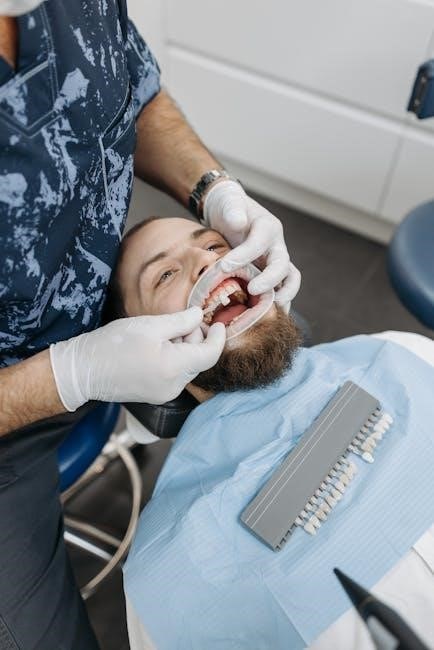
Future Trends in Oral Mechanism Exams
Future trends include integrating advanced digital tools and telehealth platforms, enabling remote assessments and enhancing diagnostic accuracy. Technology will play a pivotal role in modernizing OME practices globally.
8.1 Integration of Technology and Digital Tools
The integration of technology enhances the precision and accessibility of OME. Digital tools, such as portable devices and software, enable real-time data collection and analysis. Telehealth platforms facilitate remote assessments, making it easier to reach diverse populations. Additionally, AI-driven systems can assist in identifying abnormalities, improving diagnostic accuracy. These advancements streamline the examination process, ensuring comprehensive and efficient evaluations while maintaining high standards of clinical care.
8.2 Telehealth Applications for Remote Assessments
Telehealth applications have revolutionized remote OME assessments, enabling clinicians to evaluate patients virtually. Video conferencing tools allow real-time observation of oral structures and movements. Digital documentation and cloud-based platforms ensure secure data storage and accessibility. Telehealth facilitates consistent monitoring, particularly for patients in remote areas or with mobility challenges. This approach also supports post-surgical recovery assessments, reducing the need for in-person visits while maintaining high-quality care and diagnostic accuracy.
Resources for Further Learning
Recommended textbooks and online courses provide in-depth knowledge on OME, while guidelines and training programs offer practical skills for clinicians and students seeking advanced understanding.
9.1 Recommended Textbooks and Guidelines
Several textbooks and guidelines are available for in-depth study of OME, including the Dworkin-Culatta Oral Mechanism Examination and Treatment System. These resources provide detailed assessment techniques and evidence-based approaches for evaluating oral structures. Academic journals and publications, such as those from speech-language pathology associations, also offer comprehensive insights. Additionally, online libraries and professional websites host downloadable PDF guides, making it easier for clinicians and students to access standardized OME protocols and best practices.
9.2 Online Courses and Training Programs
Online platforms offer specialized courses and training programs for mastering the Oral Mechanism Examination. Websites like Coursera and Udemy provide structured learning modules, while professional associations offer certified training. These programs include interactive simulations, case studies, and downloadable resources such as the Oral Mechanism Exam PDF. They cater to both clinicians and students, ensuring practical skills and theoretical knowledge. Many courses emphasize evidence-based practices and updates in clinical techniques, enhancing proficiency in conducting and interpreting OMEs effectively.
The Oral Mechanism Examination is a vital tool in assessing speech and swallowing functions, supported by resources like the Oral Mechanism Exam PDF. Its clinical applications remain essential in modern practice, aiding accurate diagnoses and effective interventions across diverse patient populations.
10;1 Summary of Key Concepts
The Oral Mechanism Examination (OME) is a critical assessment tool in audiology and speech-language pathology, evaluating oral-facial structures for speech and swallowing. It involves standardized forms like the Oral Mechanism Examination Form (OMEF) and checklists to ensure thorough evaluation. The exam identifies structural and functional abnormalities, aiding in early diagnosis and intervention. Its applications span pediatric to adult populations, addressing diverse disorders. Integration of technology and telehealth further enhances its accessibility and efficiency in modern clinical practice, ensuring comprehensive care for patients with communication and swallowing challenges.
10.2 The Role of OME in Modern Clinical Practice
OME is fundamental in modern clinical practice for diagnosing speech and swallowing disorders. It provides a comprehensive evaluation of oral structures, supporting personalized treatment plans. The integration of technology and telehealth enhances its accessibility, ensuring efficient assessments and interventions. OME remains essential for addressing diverse patient needs, from pediatric to adult populations, in audiology and speech-language pathology.
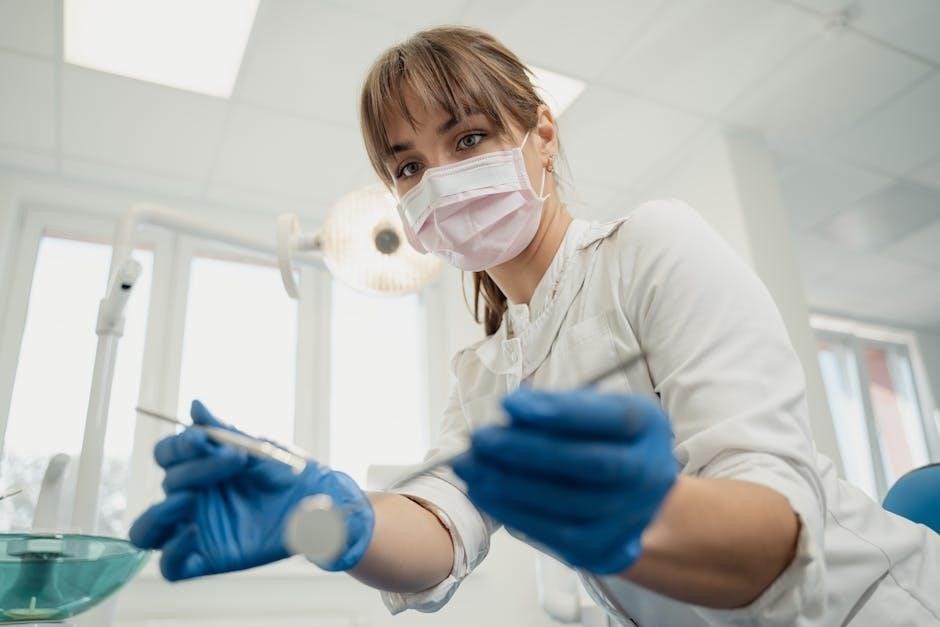



Leave a Reply
You must be logged in to post a comment.